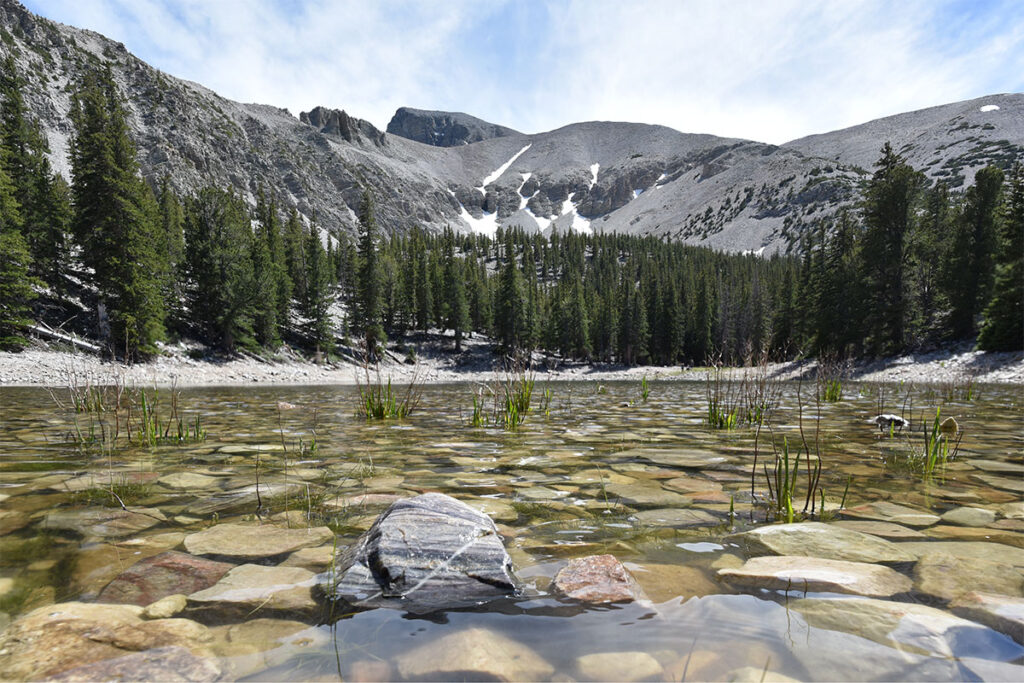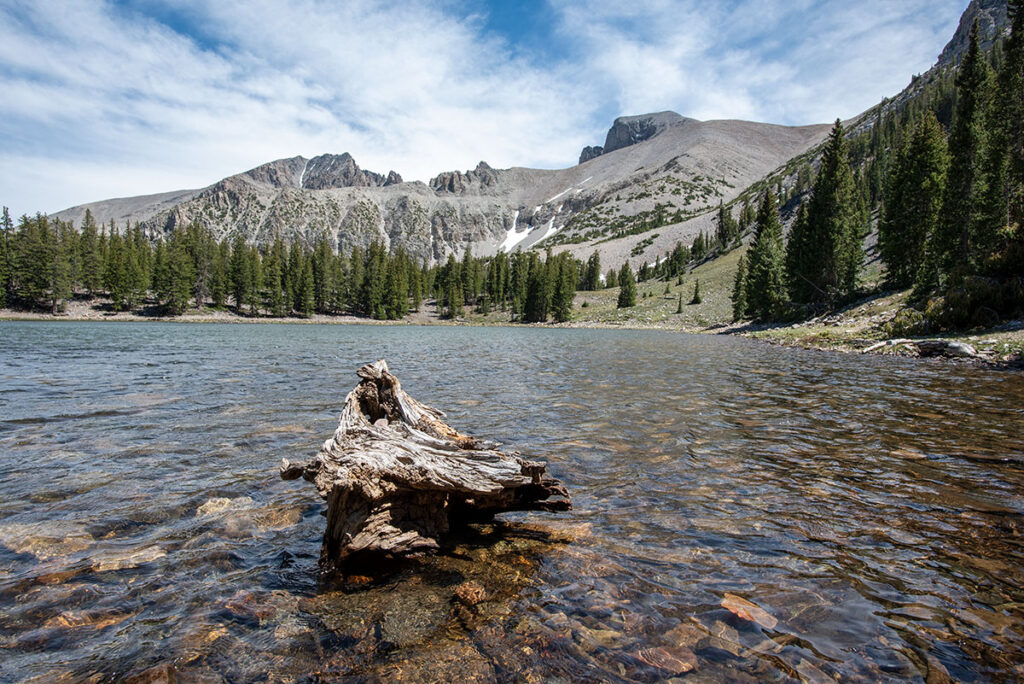The largest desert in the U.S.A. covers most of Nevada and touches five states in total. It’s bigger than any state east of the Mississippi, full of tall mountain ranges and deep desert valleys. Yet for all that size, Great Basin Desert has only one national park to show for it, a little-known and very remote reserve named for the desert it represents.
So you better believe it puts the desert’s best foot forward. Besides beautiful desert and mountain scenery, there’s a few things here found nowhere else on earth.
Great Basin National Park is home to the Lehman Caves, a massive cave complex more than two miles deep. You will also find bristlecone pines, some of the oldest trees in the world. The park has many more bonafide credentials, including alpine lakes, rock arches, good hiking trails, and an International Dark Sky Park designation.

It’s hard to get to, yes, which limits the crowds and is part of the appeal. Even though Great Basin NP is in Nevada, it’s actually closer to Salt Lake City than to Las Vegas. It’s still a 3.5 hour drive from Salt Lake, or 4.5 hours from Vegas.
The park’s terrain varies from the high desert sagebrush on the valley floor to Nevada’s second-tallest mountain, Wheeler Peak at 13,065 feet. The gateway town to the park is called Baker, a tiny settlement with limited services and weak cell phone coverage. Heading west from Baker there’s a 17-mile road that climbs to Wheeler Peak Campground all the way up at 10,000 feet elevation.
At the end of the road is the launch point for the most popular hiking trails in the park. The Lehman Caves are just six miles from Baker before the road starts getting really steep.

LEHMAN CAVES
Before Great Basin became a national park in 1986, there was Lehman Caves National Monument. The cave complex gained fame as “a natural wonder of the West,” and was first protected way back in 1922. For the next 50 years Lehman Caves was much better known than it is today. Despite the retreat from the national conscientiousness, the caves are still a natural marvel.
Tours of the caves have very limited space and have a ticket-based reservation system. During the summer, tours are almost always full so reserving ahead of time is recommended.
HIKING
There’s lots of great hiking, ranging from an easy loop hike to Teresa and Stella lakes to a strenuous ascent of Wheeler Peak. The visitor center has a nice brochure devoted solely to describing the different hiking trails.
BRISTLECONE PINES
Not only are bristlecones the oldest living trees in North America, their eccentric, gnarled appearance gives these trees plenty of clout. Bristlecones also manage to survive at extremely high altitudes where other trees cannot, proving their place among the hardiest plants on earth.
Of the three separate groves in the park, the most easily accessible is reached on a 1.5 mile hike (3 miles total) from Wheeler Peak Campground.
Discover more great outdoors places in Nevada HERE